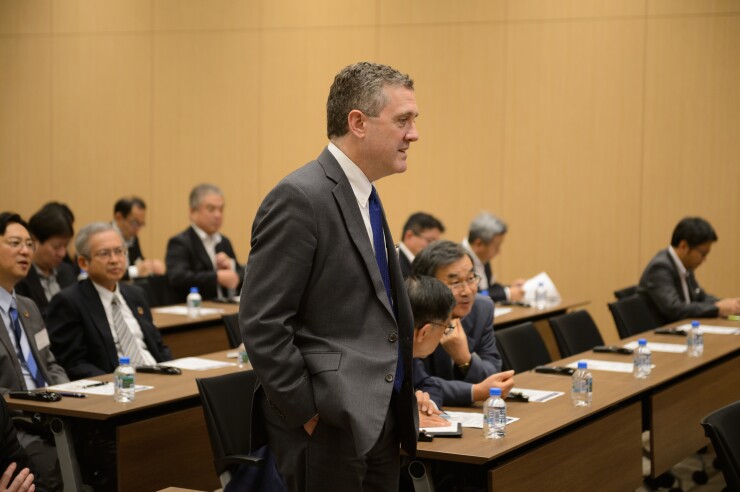Federal Reserve Bank of St. Louis President James Bullard said a strategy of capping Treasury yields out to a certain maturity may not work and such yield curve control seems unnecessary with the market pricing in rates near zero out into the future.
“Right now there are more questions than answers about this and I don’t really think this is a pending thing for the committee because we are already expecting rates to be low for quite a while,” Bullard said Tuesday.
“I am not sure you need to put caps in or anything else. You have already got the low expected rates that you desire for this situation,” he said during an interview on Bloomberg Television.

Bullard’s comments echoed Fed Chair Jerome Powell, who told Congress last week that the Federal Open Market Committee’s study of yield curve control was at an early phase and no decisions had been taken. Fed officials this month held interest rates near zero and signaled they would keep them there through 2022 as they confront the economic impact from the coronavirus.
“The U.S. had yield curve control during World War II and after the war the exit from yield curve control was very difficult, so it kind of ended in tears,” Bullard said. “That is one of the main concerns about going in this direction.”
“Japan as we know has done yield-curve control but one of the things they wanted to do was get out of the quantitative easing program,” he said. “They scaled that back dramatically by just targeting yields directly. So I think there are a lot more questions than answers around yield-curve control right now.”
Bullard indicated he was comfortable with the committee’s current guidance in its statement. He said that while the U.S. economy is likely to rebound in the third quarter, businesses need to adapt to living with a continuing threat of the virus rather than hope for a quick solution from a vaccine.
“I think we’re giving great forward guidance right now and I think there’s really no problem with where we are today. We’re projecting low rates — the policy rate — far out into the future. Longer term yields are also quite low.”
U.S. unemployment fell to 13.3% in May after the economic lockdown, to slow the spread of the virus, sent the rate surging to 14.7% in April. According to quarterly forecasts published on June 10, the median estimate of Fed officials was for unemployment to continue declining to 9.3% in the fourth quarter.





